|
New Safety Barrier at Stoke Road, Blisworth |
|
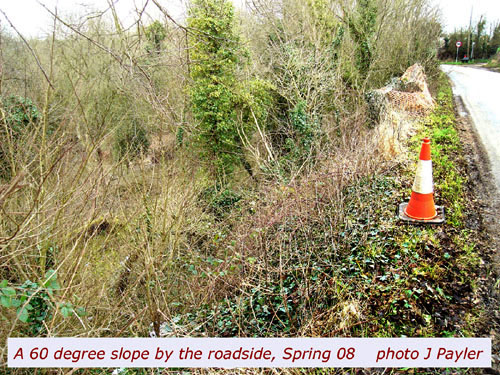 |
Purpose of this report - to record the process of enhancing the safety of the Stoke Road on its exit from the village as it runs alongside the canal embankment. The campaign to obtain from the NCC a safety barrier was initiated in January 2008 when it was realised just how much the canal embankment had 'fallen' away from the level of the Stoke Road in recent years. Winter inspection is easiest, when the leaves are off the trees. The substantial drop renders the road unsafe in terms of having no escape route should there be a need to avoid a collision. The background to this topic, comprising the history of the embankment, the account of the campaign and our mini-survey of the profile of the embankment, is given on this website here. |
|
In the course of researching the issues, letters and emails have been sent to NCC, SNC, the Parish Council, the "Your Say" slot in the Chronicle & Echo and, of course, to British Waterways by a small group of villagers. What can only be described as 'resistance' to our requests has recently been turned around with the news that, in the near future, a barrier would be installed. That was August 5th - there have been some delays since then, the NCC Transport and Highways Dept. has been re-structured and the job re-scheduled for roughly mid-November 2008. |
|
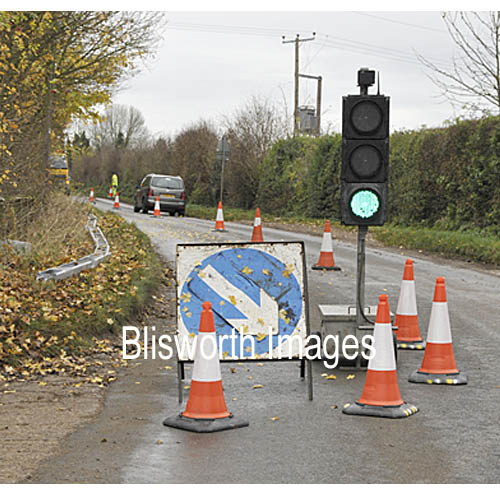 |
Sure enough, on Thursday 13th November a load of steel railings arrived at the tunnel mouth car park at 8am. A small party of workmen convened after that, unloaded steel and gear, laying them out along the grass verge. The one lane system would not be welcome during rush hour and for that reason the team operates at the roadside only between 9am and 3pm. |
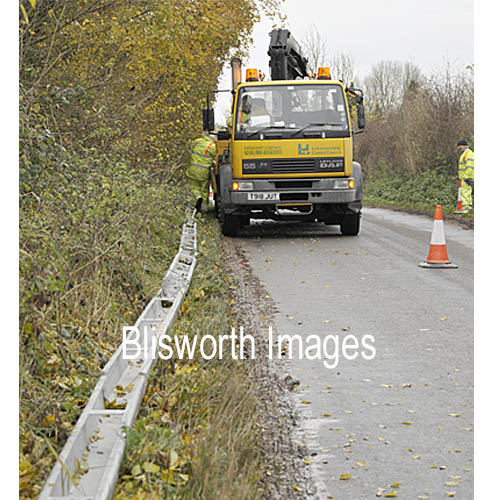 |
As evident in the picture above, they seem to intend starting the barrier a long way ahead of any particular hazard - ie. alongside the British Waterways car park. |
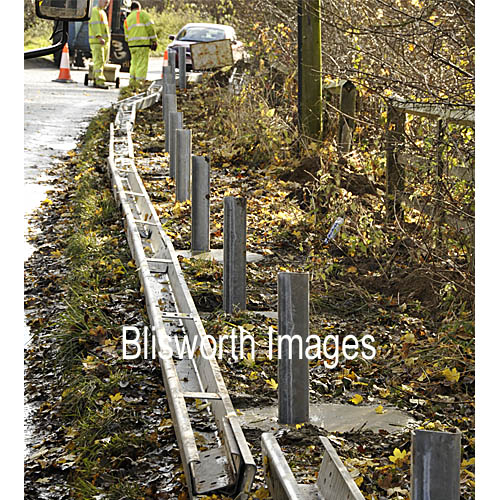 |
Where the verge is quite wide a two foot deep hole is dug for each post
which is concreted in. An explanation of the design is given in the
last panel. In the foreground are a pair of plates that
will be used to join the ends of the barrier
rails, bolted together internally.
The team have taken to temporarily bolting the 16 foot rails together as they lie on the ground since a large batch of rails was stolen one night - presumably for scrap. This beggars belief as the receivers of the steel must know they were stolen and need special treatment to remove the new-looking zinc dip. |
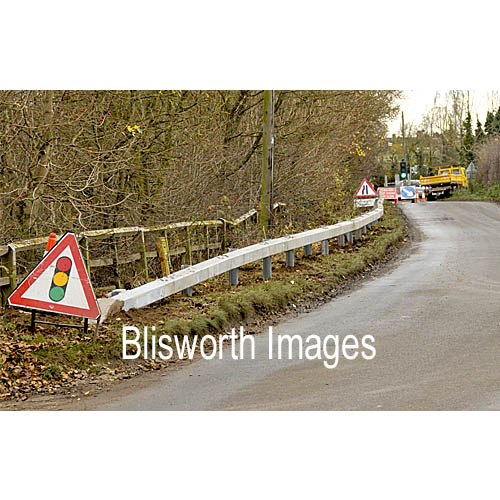 |
The south end of the barrier was finished on Thursday 20th November. |
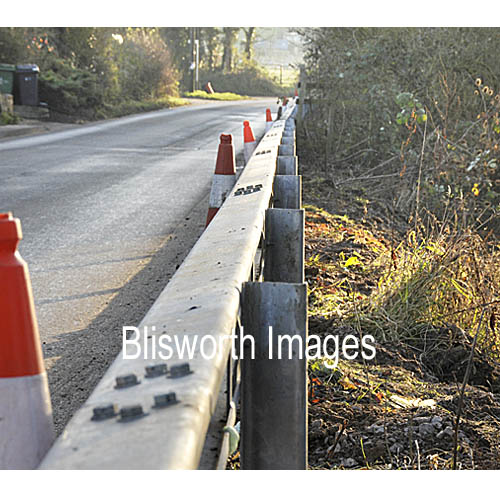 |
At places where the bank comes within 3 feet
of the road edge, the hole is dug as deep as possible and angled a
little under the road. The frail wooden fence was in the way and
had to be cut off. This makes the road edge look more dangerous -
a good thing really but perhaps much less reassuring for the rider of a horse
suffering an attack of Delirium Pegasus - a parachute is advisable.
Note that when the barrier is struck by a vehicle it is the overall strength of a 300 yard stiff bar of steel that retains the vehicle, supported by dozens of somewhat easily bent posts. Design ensures that the posts can bend and, near the impact, also detach from the barrier. Later, in repairing the barrier, damaged posts may be withdrawn from a steel housing that is generally left undamaged in the concrete, ready for a new post. Displacement of the concrete is, by design, an unlikely event. This shot shows the completed end of the barrier near to "The Green" - finished on 1st December 2008. |